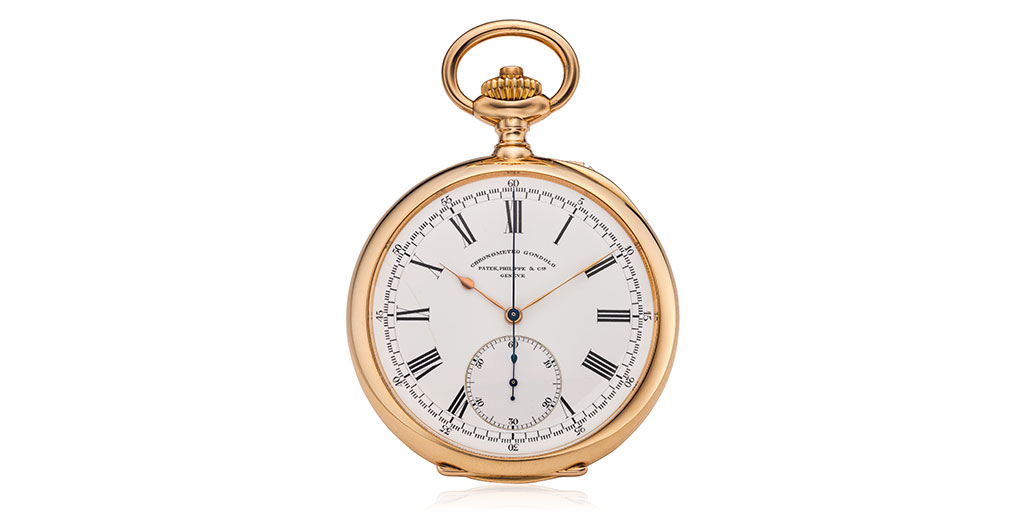The retailer Gondolo & Labouriau thrived between the 19th and the 20th century when Rio de Janeiro was the capital of the Empire of Brazil and rivaled Paris as one of the most beautiful cities in the world. From 1891 until 1935, the Italian French partnership single-handedly established the fame of Patek Philippe throughout the whole of the South American continent. At its peak, Gondolo & Labouriau was probably the most prolific watch retailer in the world, selling at least a third of Patek Philippe’s annual turnover. However, following a prolonged international financial and social crisis, its downfall almost pulled Patek Philippe into the abyss were it not for the timely acquisition by the Stern family in 1932. Today, the legacy of Gondolo & Labouriau lives on in the Patek Philippe Gondolo model lineup, having left a deeper mark than any other retailer in the makers’ history. In this special three-part series, Carlos Torres dives deep into the complicated and fascinating history of the rise and fall of the legendary Brazilian retailer.
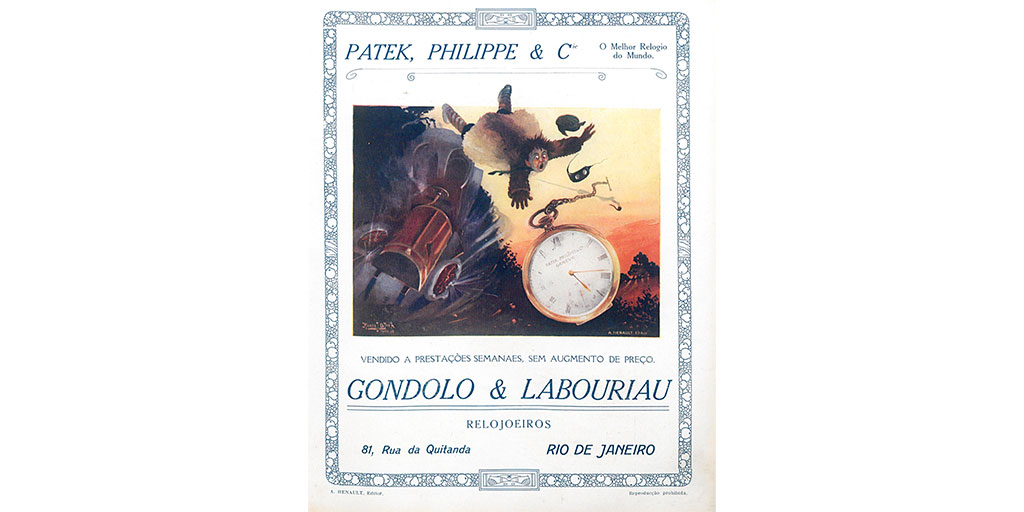
The beginning
On May 15th, 1855, an Italian of Sardinian origin, Emilio Joani Gondolo announced the opening of his “New and Grand Watch and Jewellery Agency” at 12A, Rua da Candelaria in Rio de Janeiro. Just two blocks away from the “Paço Imperial”, where Emperor D. Pedro II had his working office. Although it was an event of minor importance for the royal subjects of the capital of Brazil, they could not have anticipated that this was to be the beginning of a remarkable story.

Coincidently, it was at this time that the first carnival society of the city, the “Congress of Carnival Sumities”, was about to have its inaugural parade, with members of the Brazilian high-society dressing up as Ukrainian Cossacks, Don Quixote, Mandarins or Ferdinand the Catholic, among other luxurious European-inspired costumes.
Also, at this time in history, in the wake of the First Industrial Revolution, the imperial government of Brazil had just signed a contract with British born engineer Edward Price for the construction of the first section of a railway aimed to link the court with the developing western provinces of “São Paulo” and “Minas Gerais”. On the other side of the Atlantic, the old continent preferred to wage war. Russia was about to lose the Siege of Sevastopol, signaling the beginning of the end of the Crimean War against a solid opposing coalition made up of France, the Ottoman Empire, the United Kingdom and Sardinia. In Paris, on the very same day that Gondolo opened his store, Napoléon III was giving his inaugural speech at the opening of the grandiose “Exposition Universelle” of Paris.
Emilio Joani Gondolo had arrived in Rio just a decade earlier, in 1844, seeking employment as a watchmaker among the city’s merchants and trying to benefit from the new and dynamic order brought in by the independence of the former Portuguese colony. In the middle of the 19th century, the Empire of Brazil, under the rule since 1831 of D. Pedro II , was a promising destination following the successful rebellion that separated it from the Portuguese crown in 1822.
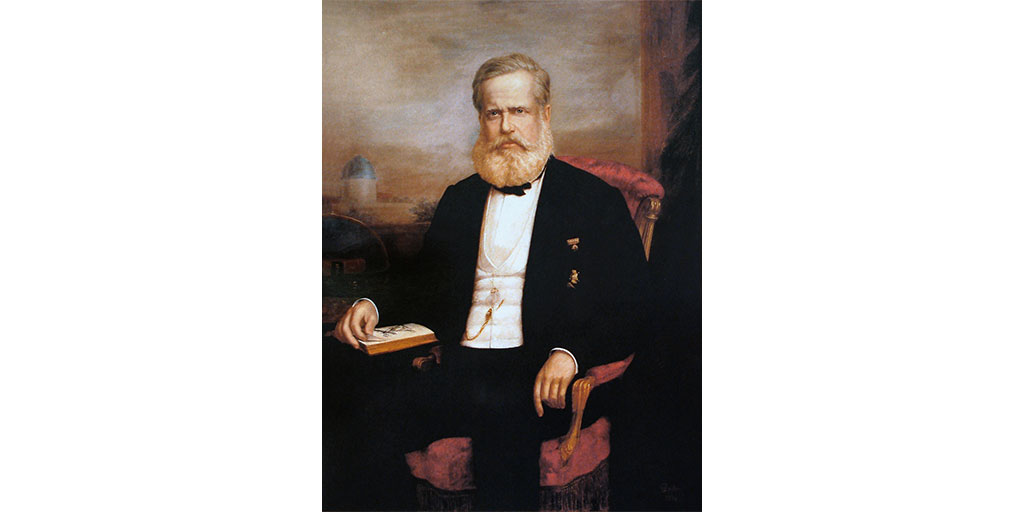
Having worked for years under the supervision of the famous Austrian chronometer maker Joseph-Thaddeus Winnerl, in his Paris workshop at the “Carrefour de l’Observatoire”, Emilio Gondolo was as well acquainted with the art of watchmaking as he was with the art of selling its produce. In the workshops of Winnerl, Gondolo had the chance to learn and work side by side with extraordinary talents, among them Ferdinand Adolf Lange. Years before, the man who later founded the German Glashütte watch industry had started an apprenticeship with the Austrian maker following a personal recommendation made by his future father-in-law, Johann Christian Friedrich Gutkaes.
Earlier, in July 1839, another brilliant watchmaker had settled down in the French capital. Jean Adrian Philippe had just arrived from London where he had worked for three years after an invitation by a reputable British Chronometer maker he met in Le Havre. Following his arrival in Paris, Adrien Philippe may well have made his acquaintance with Joani Gondolo while they both worked in the capital following the end of the golden years of French watchmaking.
Winnerl was a prolific watchmaker and inventor. In 1831, he succeeded in developing the first-ever split-seconds chronograph. The initial mechanism was composed of a single central second hand which, after being immobilized for a given time, was able to instantly catch up with the elapsed time once it had been reset. In 1838, the Austrian chronometer maker improved his system with a second split-seconds mechanism. This time, it had two chronograph hands, including a heart-shaped cam, which allowed the chronograph hands to reset to zero. Joseph-Thaddeus Winnerl had just laid the foundations of the modern chronograph, permeating Gondolo with a keen sensibility towards precision and accuracy that he took with him to Brazil, and that would accompany him for the remainder of his life.
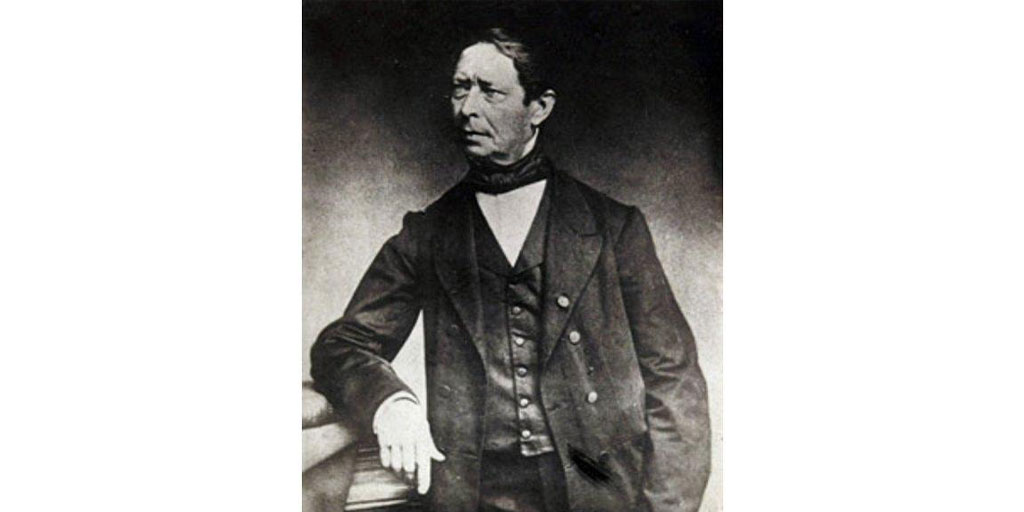
The new shop now opening in Rio de Janeiro was a well-ambitioned personal goal for which Gondolo wanted only the very best available. Being aware that by the 1850s, the fame and quality of British watchmakers were at their peak, Gondolo acknowledged this by choosing the watchmakers of Rotherham & Sons, based in Coventry as their first big suppliers. Founded in 1750 by Samuel Vale, by the time the company started its partnership with Gondolo, it was producing around nine thousand watches a year, or about 180 per week.
Emilio Gondolo was also aware of another important maker of impeccable repute using a new and remarkable keyless stem-winding and setting system with great success. The young company Patek Philippe had just moved the year before to new premises at 22, Grand Quai, Geneva, simultaneously announcing an important partnership with Charles Lewis Tiffany of New York.
Six years prior to Emilio’s shop inauguration, and signing as “Patek & Cie, Fabricants d’Horlogerie à Genève”, the Swiss watchmaker had taken its first partner in Rio de Janeiro in 1849. Monsieur Edouard Meyrat (of Swiss/French origin), already an established watchmaker to the Imperial Court in Rio de Janeiro, was chosen to be their sole representative for all of Brazil.
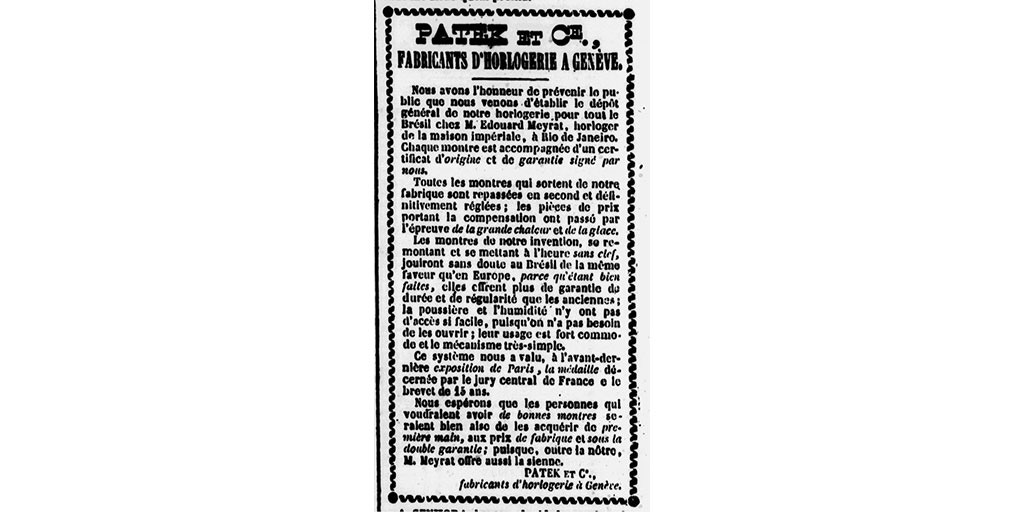
Over the next 15 years, with a keen eye for quality and performance, Emilio Gondolo developed his own business. His ambition to offer Patek, Philippe & Co. among his portfolio of watchmakers was constantly on his mind. Finally, on May 12th, 1869, following a significant refurbishment of the flagship store at Rua da Candelaria, Emilio Joani Gondolo proudly announced that Gondolo was to be the exclusive agent in all the Empire for the houses of Parkinson and Frodsham of London and Patek, Philippe & co. of Geneva.

Ever since the passing of Edouard Meyrat on March 14th, 1859, the business, managed by his widow and son had been dwindling, and they had ceased advertising their relationship with Patek, Philippe & co of Geneva by mid-1861.
However, quite unexpectedly, and just nine-month after the Gondolo announcement, on November 15th, 1869, Patek Philippe & co released a surprising statement in Rio’s most important daily newspaper, the Jornal do Commercio. The Geneva firm wrote that they were stunned to see the ads published by Mr. Gondolo where he declared himself as the sole agent of the maker in Brazil. Particularly as they had “never sent him a single example of their watches”.

The coveted partnership with Patek and Philippe, and Emilio Gondolo’s biggest ambition, was never realized during his lifetime. On the morning of January 5th, 1885, at around 11:30 am, the life of Emilio Joanny Gondolo ended abruptly when he committed suicide by shooting two revolver bullets into his chest. He was just 52 years old. For some time before this tragic end, Emilio had complained of not being well. The loss of his young son Guido to illness at the age of 13, an unhealthy love affair, problems plaguing the business and an unexpected shift in the market had taken a significant toll on his health.
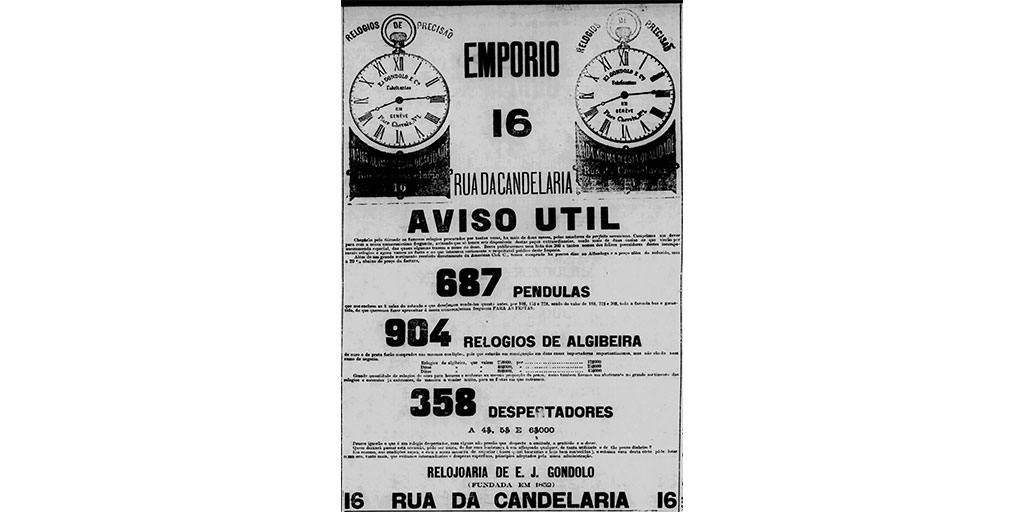
Emilio Joanny Gondolo had established himself in Rio de Janeiro as a watchmaker 32 years ago. For many “Cariocas”, Gondolo was the name they thought of when discussing the next pocket watch or the choice of a clock for their homes. Emilio had introduced the first public Regulator to Rio de Janeiro, pursuing the belief that precision and accuracy were essential in one’s life. He had even ordered the construction of a fully operational time ball at the corner of his shop. This way, every passerby could look up at the sphere on the mast and precisely set their watch to noon upon its drop. And although considered to be somewhat creative regarding some of his business practices (for example, there was a rumor that Emilio was selling gold chains with a platinum core when platinum was much cheaper than gold), he was above all a good Samaritan. The Italian watchmaker had a large heart and was always ready to contribute to the many causes Rio de Janeiro and his adopted Empire requested of him.
His younger brother, Maggiorino Carlo Antonio Gondolo, took care of the funeral held the next day. The legacy of the Gondolo name would now fall upon his shoulders.
The rise of Carlo Gondolo
The relationship between Emilio Joani Gondolo and his younger brother was not an easy one. On January 1st, 1864, after taking Maggiorino Carlo Antonio Gondolo under his wing as a young watch repair apprentice, he decided to take him and his brother-in-law, Miguel Natini, into partnership. Accordingly, he changed the company’s name to “E.J. Gondolo & Irmãos” (“irmãos” meaning brothers).
Emilio was not an easy man to work with, as he proved over the years by the number of partners he took during his professional life and that later left, some keeping their friendship intact while others parting in straightforward litigation. Even though Carlo Gondolo managed to sustain the partnership with his older brother for eight years, by August 1871, he was working alone at a new location at 21, Rua Quitanda. It was here that Carlo Gondolo proved his watchmaking skills, both as a theoretical and a practical specialist, by servicing thousands of watches with his own hands.

He was incredibly proud of this feat and could not resist advertising the number of repairs performed by his workshop every year. From the opening of his repair business in 1871 until 1914, Carlos Gondolo’s workshops claimed to have repaired no less than 134,120 watches. During this period, their peak year was 1913, with 9,003 watches serviced and repaired from January to December. An average of around 750 watches a month, or 27 a day!
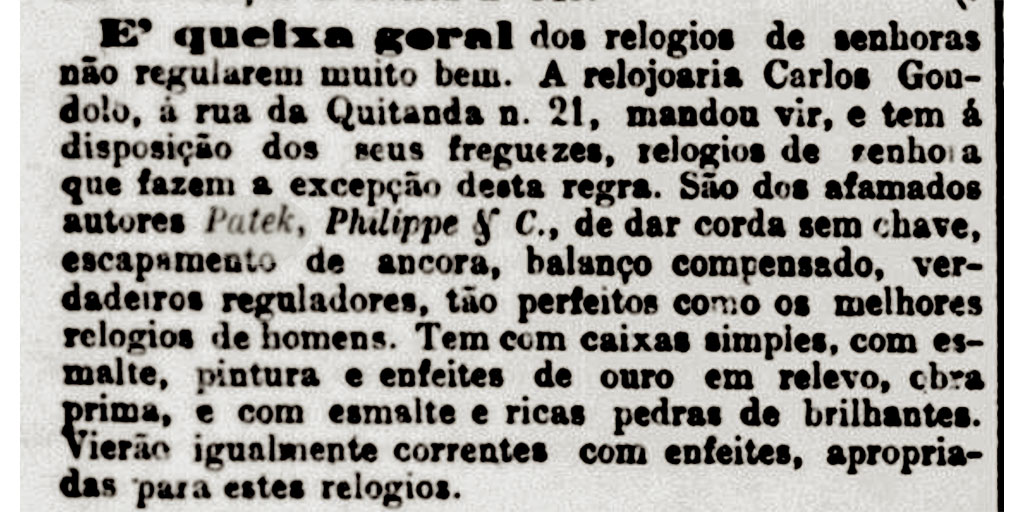
On December 22nd, 1874, Carlo Gondolo discreetly announced that he had ordered several watches from Patek, Philippe & Co., which were guaranteed for five years, and had just arrived on board the steamship Mendoza sailing directly from Bordeaux. The news, announced as a small ad in a daily newspaper, meant that Carlo Gondolo had achieved what Emilio could not. The agreement seemed to have started in 1871, and from now on, one could finally read the names of Gondolo and Patek Philippe in the same sentence. It was to be the start of a singular and remarkable partnership.
Almost a decade later, in June 1882, Carlo Gondolo moved to new premises down the street at 71, Rua Quitanda adding the British watchmakers Robert Roskell, Rotherham & Sons, E. Dent & C., and John Bennett to his portfolio. Carlo Gondolo would stay at this address for the next fifty years, the place where the new partnership would flourish and completely change the business of selling prestige timekeepers in Rio de Janeiro.
In Part II, Carlos Torres reveals the partnership with Paul Henrique Labouriau and the birth of Gondolo & Labouriau and the “Chronometro Gondolo.”
Collectability would like to sincerely thank Carlos Torres for his relentless, in-depth research into the history of Gondolo & Labouriau. Over many months of investigative research, he has unearthed new academics on the history of the Brazilian retailer which have never been published before. Collectability is honored to exclusively publish his findings for the first time here.

